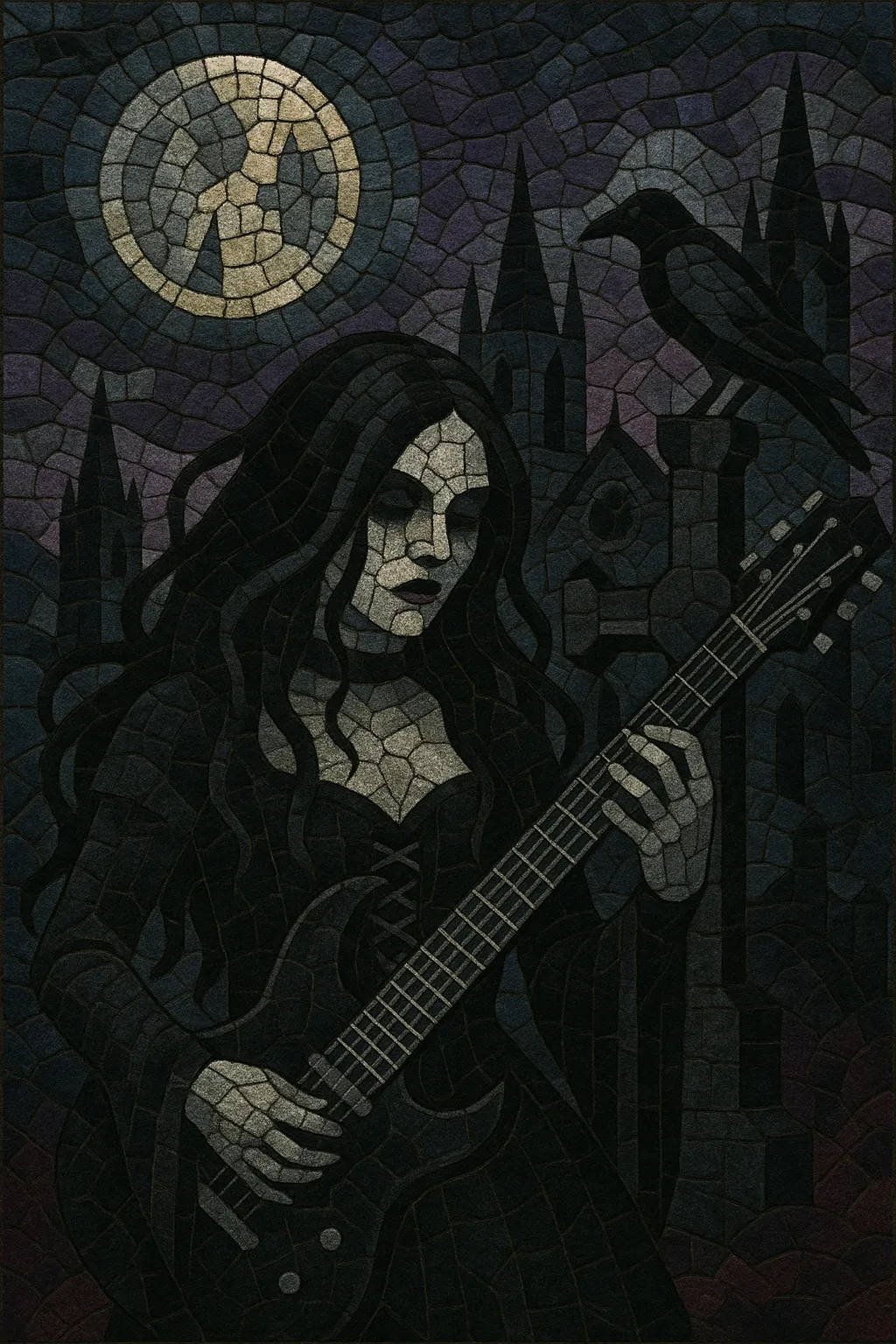Gothic metal is a fusion of the heaviness and slow, atmospheric pull of doom metal with the dark romanticism and melodrama of gothic rock. It emphasizes minor-key harmony, thick guitar textures, and prominent keyboards or orchestral pads to create a brooding, cinematic mood.
Vocals range from deep baritone croons and clean female sopranos to harsh growls—sometimes used together in the "beauty-and-the-beast" style. Lyrical themes often explore love and loss, mortality, melancholy, myth, and the supernatural, presented with a sense of theatricality.
While centered in metal, the style borrows from dark wave’s somber synths and gothic rock’s atmosphere, leading to variations that lean toward doom, symphonic, or even alternative-leaning approaches.
Gothic metal coalesced in the early 1990s, primarily in the United Kingdom, as bands fused doom/death-doom’s weight and tempo with the mood and aesthetics of gothic rock. Paradise Lost’s album "Gothic" (1991) is widely cited as a template, alongside the parallel innovations of My Dying Bride and Type O Negative’s baritone-driven, melancholic sound.
The sound quickly spread through Scandinavia and continental Europe. Theatre of Tragedy popularized the "beauty-and-the-beast" vocal interplay, while Tiamat and The Gathering brought lush keyboards, atmospheric arrangements, and rock/alternative colors. Portugal’s Moonspell helped carry the style into Lusophone scenes.
By the late 1990s and early 2000s, bands like Lacuna Coil and Within Temptation (at first more gothic-leaning) brought hooks and sheen that connected with wider audiences, intersecting with symphonic metal and alternative metal production values. Tristania and later Draconian steered the genre toward a heavier, doom-laden path.
Gothic metal remains a broad, internationally practiced style—from lush, symphonic-tinged productions to austere, doom-forward approaches—while its aesthetics continue to inform neighboring metal and dark alternative genres.


